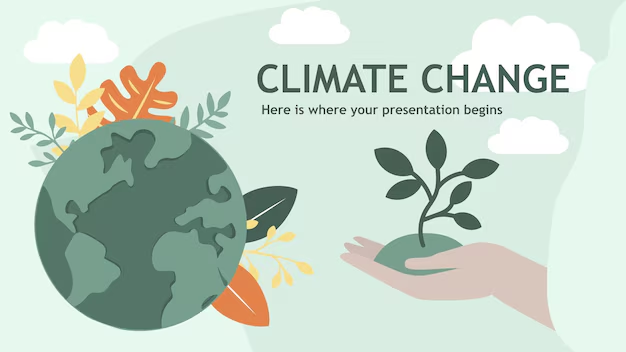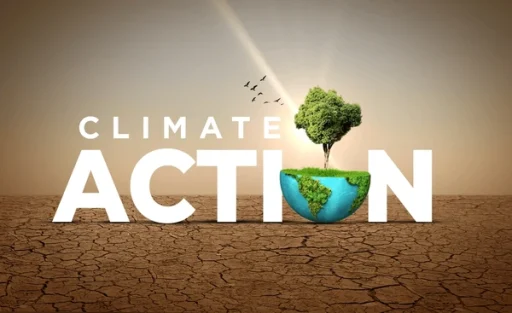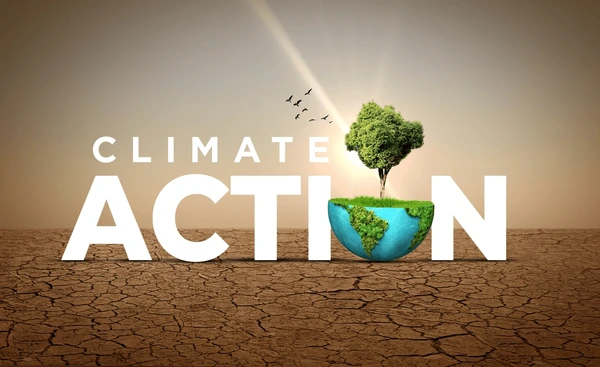Climate Action 2026 has emerged as a rallying cry for governments, communities, and corporations alike as the year 2026 draws near. Beyond gradual change, the global climate issue demands audacious, scalable solutions. Fundamentally, Climate Action 2026 is a collection of proactive plans, initiatives, and regulations intended to lower emissions, increase resilience, and spur sustainable growth in areas susceptible to climate change, extreme weather, and environmental stresses.
Renewable energy farms, flood-resistant infrastructure, nature-based solutions, and disaster preparedness systems are examples of “climate-smart” investments that are now being prioritized by many countries and communities. Communities are shielded from climate shocks by these technologies, which are not just for mitigation but also for adaptation. It is anticipated that Climate Action 2026 will become a landmark year by 2026, with tangible results—such as reduced carbon footprints, increased resilience, and better human well-being—being used to gauge success or failure.
The main elements of Climate Action 2026 will be outlined in this article, along with important breakthroughs like renewable energy and resilient infrastructure, success stories, challenges and solutions, and how these strategies fit into global climate frameworks and goals.
Defining Climate Action 2026: Core Concepts and Goals
We must first define the fundamental ideas and objectives of Climate Action 2026 in order to comprehend it. Fundamentally, it combines adaptation and mitigation, lowering greenhouse gas emissions while making sure civilizations are resilient to climate stressors. This dual strategy is essential since many locations will experience more heat waves, floods, and sea level rise even with robust mitigation.
Achieving net-zero or considerable emissions reductions by that landmark year, particularly in the energy, transportation, and industrial sectors, is one of the main objectives of Climate Action 2026. Increasing resilience by constructing infrastructure that can withstand storms, droughts, or changing weather patterns is another objective. Justice—making sure frontline and disadvantaged people gain from climate policy rather than suffer—is equally crucial.
The guiding principles of Climate Action 2026 are nature-based solutions, inclusion, and scalability. Projects ought to be socially just, inexpensive, and reproducible. Policies ought to support local involvement, innovation funding, and public-private partnerships. This establishes the goal: the world community must show that climate solutions can be long-lasting, egalitarian, and successful by 2026.

Renewable Energy & Clean Power Initiatives
The expansion of clean electricity and renewable energy technologies is a key component of Climate Action 2026. National energy mixes are changing due to the use of solar, wind, hydro, geothermal, and new technologies like tidal energy. By 2026, several nations have committed to switching to renewable energy sources for a significant share of their electrical infrastructure.
For instance, some island states are incorporating battery storage and microgrids, while European countries have hastened the deployment of wind and solar. Carbon capture technology is part of Germany’s industrial decarbonization initiatives, which were started in 2025 to support the country’s transition to green energy. The success of Climate Action 2026 depends on the combination of renewable energy sources and green technologies.
Comparison Table: Traditional vs Renewable Energy Systems
| Feature | Traditional Fossil Systems | Renewable & Clean Energy Systems |
|---|---|---|
| CO₂ / GHG emissions | High | Very low to zero |
| Fuel costs / volatility | Subject to global markets | Stable (sun, wind, water) |
| Long-term operational cost | Rising with scarcity & regulation | Lower after capital investment |
| Scalability & flexibility | Limited by centralized infrastructure | High, modular, distributed options |
| Public perception | Increasingly negative | Positive, aligned with climate goals |
Disaster-Resilient Infrastructure & Smart Cities
Building resilient infrastructure—systems made to resist climatic shocks while lowering future risks—is another essential component of climatic Action 2026. Green roofs, raised roadways, permeable pavement, and flood barriers are all examples of climate-smart planning that takes a proactive approach rather than responding to calamities.
Smart cities improve resilience through the use of sensors, IoT, and data analytics. Examples include energy-efficient street lighting, adaptable drainage systems, and real-time flood alerts. By implementing grid enhancing technologies (GETs), power networks may better adapt to severe weather conditions, maximizing delivery and averting blackouts. Additionally, communities are using nature-based infrastructure, such as growing urban trees to cool cities, protecting mangroves to buffer beaches, and restoring wetlands to absorb storm surges. These solutions blend resilience with ecological function. Infrastructure needs to be responsive and regenerative in the framework of Climate Action 2026.

Community-Driven & Nature-Based Climate Solutions
Nature-based and community-driven solutions are crucial to the inclusiveness and groundedness of Climate Action 2026. Projects that incorporate ecological restoration, social fairness, and local knowledge provide better results than top-down interventions alone. Many areas are scaling up regenerative agriculture, agroforestry, reforestation, and watershed restoration. These natural methods improve food security and biodiversity while sequestering carbon.
The Living Indus Initiative in Pakistan uses community-led strategies to preserve basins and restore river ecosystems. Wiki...
Green microprojects and microfinance enable local actors to take the lead in climate adaptation through training in disaster preparedness, rainwater collection, resilient housing materials, and localized renewable energy systems. This bottom-up approach will help Climate Action 2026 develop sustainable, affordable, and culturally relevant solutions.
Case Studies: Success Stories in Climate Action 2026
Examples from the real world effectively convey how Climate Action 2026 is changing societies and countries. Here are a few noteworthy tales:
- Germany’s Industrial Decarbonization: A €6 billion program launched in 2025 supports sectors like steel and cement to adopt carbon capture and storage (CCS) and low-carbon processes. Reuters
- Stanford University Climate Planning: Stanford’s upcoming 2026 plan includes energy, transportation, and waste systems aimed at cutting emissions and increasing resilience. Sustainable Stanford
- EU Preparatory Innovation Projects: Between 2024–2026, the EU funds place-based transformations for climate resilience, testing participatory innovation methods in regional territories. place-based-innovation.ec.europa.eu
- UNHCR Innovation Fund: Supporting innovation from 2026 onwards, funding climate action projects in vulnerable communities and refugee settings with eco-innovative designs. UNHCR
These cases show how Climate Action 2026 is not just aspirational—it’s being operationalized across sectors and geographies.
FAQs
Q1: What exactly is Climate Action 2026?
It refers to coordinated efforts, policies, and projects intended to accelerate climate mitigation and adaptation by the year 2026.
Q2: Which innovations play key roles in this action plan?
Renewable energy, resilient infrastructure, nature-based solutions, and community-driven climate projects are central.
Q3: Are there successful models already?
Yes—Germany’s industrial decarbonization, Stanford’s climate planning, and EU innovation pilots are among them.
Q4: What barriers do nations face?
Funding constraints, lack of technical capacity, political will, and regulatory hurdles are major obstacles.
Q5: How can ordinary communities participate?
Through local green projects, reforestation, rainwater systems, renewable adoption, and advocacy.
Conclusion:
The stakes are higher than ever as we approach the crucial year of Climate Action 2026. Large-scale renewable energy deployment, climate-resilient infrastructure, nature-based restoration, community-driven adaptation, and carbon management are examples of innovative techniques that are now required. They are vital instruments in the worldwide battle against climate change. We’ve seen that success is achievable: Climate Action 2026 is already under way, as demonstrated by examples from Germany, academic institutions, and EU-supported areas. Indeed, there are obstacles, but they may be overcome with the help of partnerships, finance methods, and workable tactics.
In the end, Climate Action 2026 is an appeal for shared accountability. To implement smart climate solutions at scale, governments, businesses, civic society, and communities must work together. Whether we fulfilled the promise or not will be determined in the upcoming years.
Let 2026 be the turning point in the fight against the climate disaster, a year marked by creativity, bravery, and collaboration. That is Climate Action 2026’s goal and imperative.








